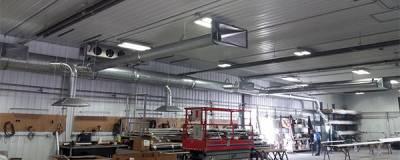Marty
How “a little dust” can do a lot of damage
Why dust collection systems are crucial to your business.
A little dust around the plant or even the office shouldn’t be a big deal, right? Wrong! Dust has the power to cause employee health problems, equipment degradation, and even possess the potential for explosion and fire. How can such a little thing do such big damage?
Breathing in dust
The human nose is a great dust filter. It traps particles and keeps them from reaching the lungs. When a person sneezes or blows their nose, the dust is then eliminated. However, some particulates do get past the nose and airway cilia and enter the lungs. Whether the dust is organic (for example, dust that arises from processing grain) or inorganic (byproducts of silica, asbestos, or coal) the result of dust accumulation can be lung damage and scar tissue or fibrosis, a condition that is life altering and permanent.
Dust on your equipment
Industrial dust will migrate and settle on unprotected equipment, the most susceptible of which are generally computers, monitors and printers. Since this equipment was not designed for an industrial setting, there are very few internal protections in place against dust, making this expensive equipment highly vulnerable. Dust accumulation is one of the primary causes of computer problems and premature failure.
Deadly dust
In 1999, an explosion and deadly fire occurred in a Massachusetts’s foundry, killing three and injuring nine. Upon investigation, the Occupational Safety Health Administration (OSHA) determined that an initial equipment fire quickly spread into ventilation system ducts, fueled by heavy deposits of phenol formaldehyde resin dust. In 2003, a fire and explosion that killed six and injured 38 at a North Carolina pharmaceutical plant was attributed to combustible polyethylene dust that had accumulated in the suspended ceilings. And these are just two examples of the dangers of accumulated dust.
Dust Control
The National Fire Protection Association (NFPA) sets forth standards on the control of dusts to prevent explosions and fires. Recommendations include “use [of] dust collection systems and filters.” OSHA standards contains ventilation requirements for certain types of operations which involve dust, including combustible dust, along with the removal of dust accumulations.
Clearly, as far as your business is concerned, there’s no such thing as “a little dust.” Combustible and capable of devastation and even death, dust control is critical to your organization and the health and well-being of your employees. It’s important to keep your dust collection system working at maximum efficiency by having it inspected and maintained for continuous, effective use. To do this, you should contact a qualified contractor, such as AEM Mechanical, to inspect your system on a regular basis.
About the author
Title: Owner
Years with company: 30+ years
My commitment to you is to provide the highest quality service at a fair price. Our advice is always centered around what is best for you. We will not suggest any work be done or products purchased that are not essential to solving your mechanical needs.
I employ quality technicians and hold them to strict standards. Between myself and my team of technicians we hold the following certifications as a company.
- Certified Quality Installer.
- Minnesota Licensed Master Plumber.
- Minnesota Licensed Technology Systems Contractor.
- EPA Certified Universal Refrigeration.
- EPA Certified Lead Safe Firm.
- Great River Energy Certified Central Air Conditioners & Air Source Heat Pumps Installation.
Author's recent posts
More posts from authorRelated Posts
2008 - 2020 © AEM Mechanical Services, Inc. - all rights reserved
MN License #34376PM
Privacy Policy | Sitemap
Website created by Mid Minnesota Marketing

